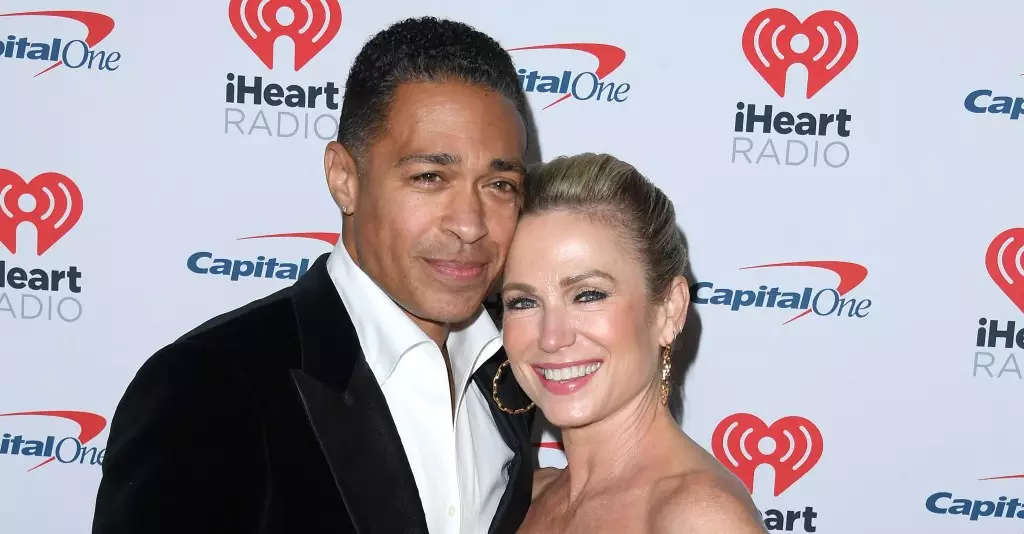In an age where social media can amplify any misstep and every detail of a televised report gets scrutinized, the recent controversy surrounding ABC News anchor David Muir illuminates the critical balance journalists must strike between personal presentation and professionalism. The incident, which involved Muir utilizing a clothes pin to adjust his slicker while reporting on devastating wildfires in Los Angeles, has ignited debate about the expectations placed on journalists during moments of tragedy.
The notion that a news anchor’s appearance can overshadow the gravity of their reporting raises significant questions about media ethics. T.J. Holmes and Amy Robach, in their podcast “Does This Fire Make Me Look Fat?”, discussed the implications of Muir’s clothing choice and the broader issues it raises. Their critique emphasizes a growing cultural awareness that appearance should not take precedence during tragic events. Robach articulated that concentrating on personal aesthetics in the backdrop of destruction and human suffering sends a troubling message to the audience—a sentiment echoing the feelings of many viewers who felt Muir’s adjustments appeared superficial at a moment demanding sensitivity.
Social media has played a pivotal role in intensifying the backlash against Muir, as users tagged high-profile figures like Jack Osbourne and Donald Trump Jr. to voice their opinions, further amplifying the discourse around the issue. Similarly, conservative commentator Megyn Kelly weighed in, underscoring the perception that Muir’s focus seemed misaligned with the severity of the event. Such rapid online criticism highlights how easily public opinion can swing, revealing not only a fascination with media figures but also a discerning social conscience that demands accountability from those in positions of influence.
While the criticisms aimed at Muir center on his choice of presentation, they may also inadvertently exaggerate the complexities of live reporting. News professionals are tasked with delivering timely and accurate information, yet they are also subjected to the same societal scrutiny as celebrities. In the podcast, Holmes noted that while presenting in a dynamic and often chaotic environment, journalists, including Muir, operate under significant pressure. The implicit expectation is that they must simultaneously engage their audience and maintain a level of composure that often involves a team effort—illustrating that a journalist’s presentation is not solely their own.
Listeners may not always appreciate the logistics behind a televised news report; the coordination between producers, wardrobe personnel, and the anchoring journalist is often lost amid the focus on the anchor alone. Holmes’ acknowledgment of the multi-faceted nature of news reporting adds depth to the criticism. It suggests that public discourse should differentiate between the personal and professional components of such broadcasts.
As the media landscape evolves, this incident serves as a case study for future reporting. The expectation for broadcasters to navigate the intricate balance between being personable and professional is heightened in times of crisis. Muir’s charge against public scrutiny could perhaps incite discussions about journalistic responsibility and the portrayal of serious events in mass media. It also calls for an examination of how the public perceives such coverage.
Ultimately, this event crystallizes a need for greater media literacy among audiences. As news consumers, it is essential to understand the challenges journalists face, while still holding them to high standards of professionalism. The dialogue surrounding Muir’s appearance emphasizes not only individual accountability but also an ethics-based approach to journalism that is sensitive to both the narratives they cover and the viewers they serve.
While Muir’s wardrobe choices may have drawn ire from the public and industry counterparts alike, this incident opens a broader conversation about the perception of journalists in modern media. The expectation for dignified representation amidst disaster is rightfully placed, but as consumers, we must also consider the immense pressure placed on these individuals to deliver when the stakes are high. The duty of reporting is complex—balancing humanity with professionalism, and it is high time we recognize the intricacies involved.


Leave a Reply